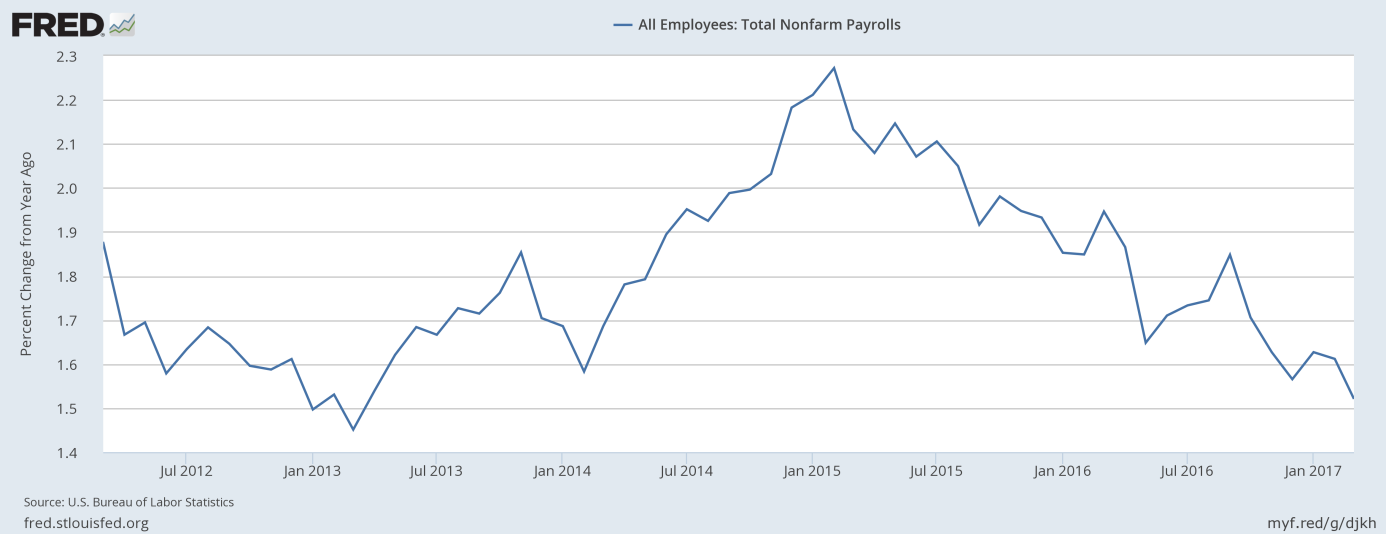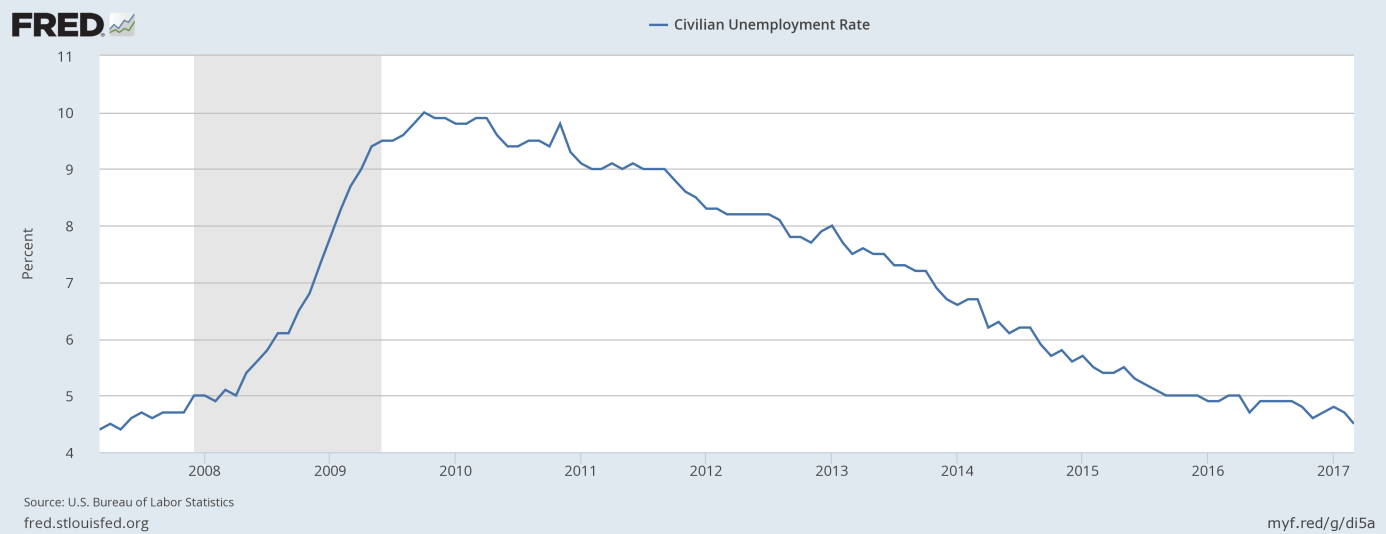The U.S. economy added only 98,000 jobs in March. What does it mean for the gold market?
Job Gains Disappoint in March
The total nonfarm payroll employment increased just 98,000 in March, following a jump of 219,000 in February, according to the U.S. Bureau of Labor Statistics. Analysts had expected 175,000 jobs created. Thus, the actual number was significantly below expectations. Moreover, employment gains in January and February combined were 38,000 lower than previously reported. It means that job gains in the last three months have averaged 178,000, significantly lower than last month. Gains were concentrated in professional and business services (+56,000), and in education and health services (+16,000). Employment in utilities and wholesale trade was little changed. Information cut 3,000 jobs, while retail trade reduced almost 30,000 jobs, which confirms that the retail industry has been facing important challenges.
Hence, job gains were soft in March. The annual job growth rate was 1.52, the lowest since March 2013, as the chart below shows. It may be a sign that the labor market is not quite as strong as some analysts suggested at the beginning of the year. In some sense, it should not be surprising, as job gains are supposed to be slowing as the labor market tightens. However, disappointing job gains may strengthen the dovish camp at the U.S. central bank and give the Fed reason to pause in May.
Chart 1: Total nonfarm payrolls (percent change from year ago) over the last five years.

Other Labor Market Indicators
Other labor market indicators were positive, on balance. The unemployment rate dropped from 4.7 percent to 4.5 percent, the lowest level since May 2007, as one can see in the chart below.
Chart 2: Civilian unemployment rate over the last 10 years.

Both the labor force participation rate and the employment-population rate remained generally flat, about 63 and 60 percent, respectively. It means that unemployed people got jobs. Moreover, the average wage in the private sector increased 5 cents to $26.14, after rising 6 cents in February. It means that the hourly pay jumped 2.7 percent over the year. That increase is not very impressive, but a gradual wage increase and declining unemployment rate are likely to be welcomed by the Fed.
Payrolls, Fed and Gold
We believe that the March report should not change the view of the FOMC members on the health of the U.S. labor market significantly. The job gains were disappointing, but the economy still managed to add 178,000 jobs over the past 3 months, on average. And the unemployment rate – a key labor market indicator – declined 0.2 percentage points. The Fed was not going to hike in May anyway, and there are still two more employment reports before the June meeting. We have to wait for the next publication to say something more about the current strength of the labor market.
The above considerations may explain why gold did not gain on Friday. Actually, we witnessed strong selling pressure after an initial upward spike in the price of the yellow metal. The whole report is not as bad as the headline payrolls number. However, Friday’s performance of gold may signal some weakness in the gold market, since the yellow metal did not manage to rise on supportive news, such as the U.S. strike in Syria and weak employment gains. We do not argue that gold should start a rally after the March employment report and the U.S. missile attack against Syria. As we repeated many times, the impact of geopolitical events on gold prices is often temporary and quickly vanishes. However, given these two significant and supportive pieces of news, one could expect a bit more bullish response on Friday – hence, gold’s performance was slightly bearish compared to the standard model. Stay tuned!
Disclaimer: Please note that the aim of the above analysis is to discuss the likely long-term impact of the featured phenomenon on the price of gold and this analysis does not indicate (nor does it aim to do so) whether gold is likely to move higher or lower in the short- or medium term. In order to determine the latter, many additional factors need to be considered (i.e. sentiment, chart patterns, cycles, indicators, ratios, self-similar patterns and more) and we are taking them into account (and discussing the short- and medium-term outlook) in our trading alerts.
Thank you.
Arkadiusz Sieron
Sunshine Profits‘ Gold News Monitor and Market Overview Editor
Gold News Monitor
Gold Trading Alerts
Gold Market Overview



